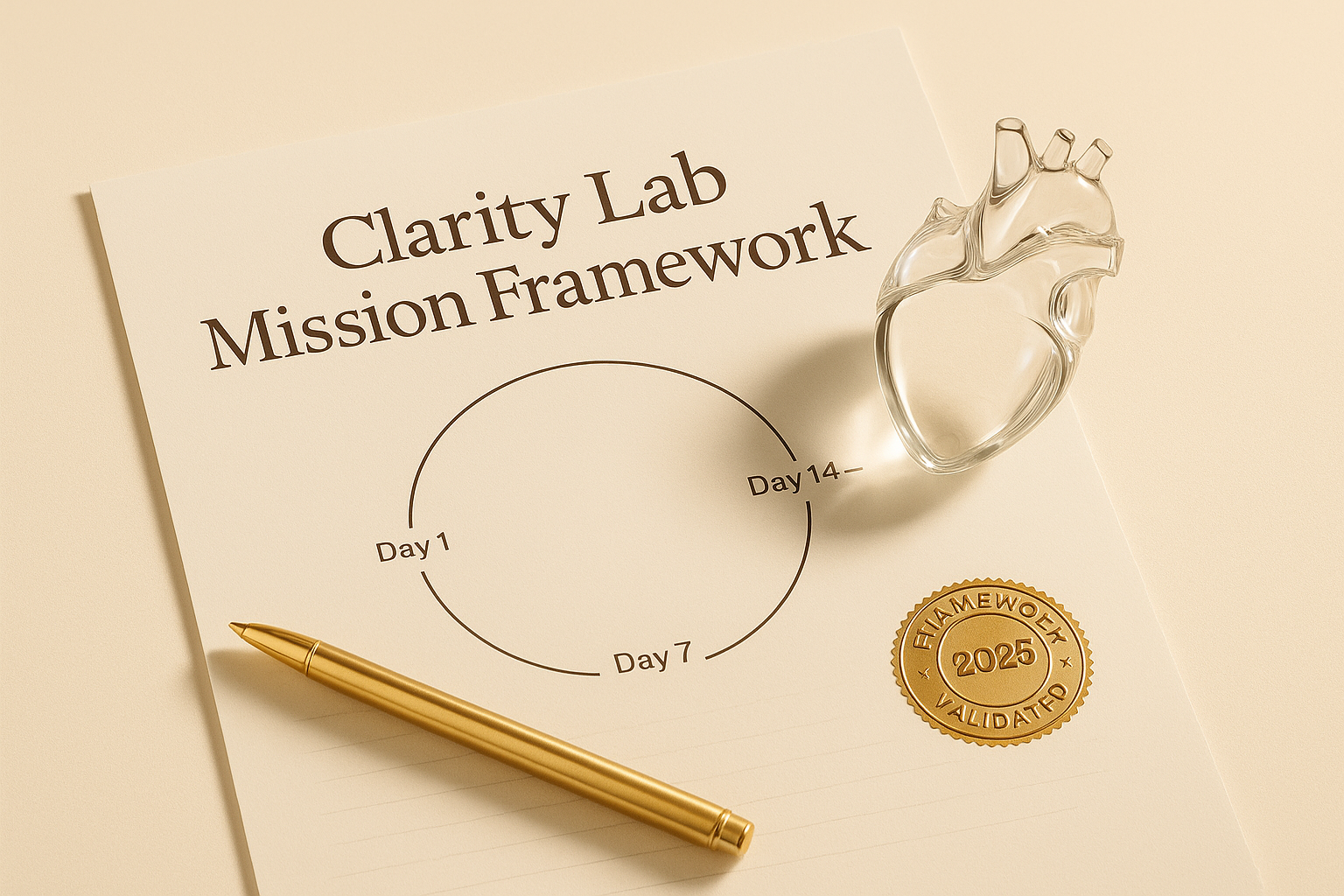The Mission

The Mission
Where emotion meets psychology and structure restores clarity.
It began with a question most women eventually ask “Why do I lose clarity the moment I care?”. It didn’t matter how intelligent, self-aware, or emotionally evolved they were.
When uncertainty entered the picture, a text left on read, a conversation that shifted, a tone that changed, something deeper happened. Logic vanished. Patterns repeated. And emotions, once grounded, began to spiral.
The truth was never that these women didn’t know better. It’s that emotional regulation breaks down the moment attachment activates.
So Clarity Lab started not as a brand, but as a study. A study of timing, pacing, and emotional recalibration.
A place to analyze why clarity fades exactly when it’s needed most and to turn that moment into something measurable.
The Real Problem Wasn’t Emotion. It Was Timing.
Every overthinker knows the feeling: You replay the message. You wait for the reply. You tell yourself not to care, yet your body still reacts.
It’s not weakness. It’s wiring. Attachment systems operate on timing loops, signals, silence, and response windows that create emotional volatility. Without structure, the mind fills that space with projection. And projection is what keeps us stuck.
Clarity Lab became a psychological lab for emotional structure.
Frameworks built from behavioral science, attachment theory, and cognitive pacing. Because clarity isn’t found in thinking less, it’s found in thinking in sequence.
Where Data Meets Heart
Our frameworks aren’t self-help. They’re self-regulation systems.
Each one is designed to interrupt emotional impulse, translate uncertainty into measurable stages, and restore control without suppressing emotion.
Ghosted to Girlfriend began as a 14-day re-engagement experiment:
How long does it take to shift a dynamic when you stop chasing contact and start pacing response?
The Clean Break Accelerator was developed for the relapse cycle. That endless loop of blocking, unblocking, checking, regretting, and resetting. It uses behavioral micro-rules and timing checkpoints to create closure that actually holds.
The 10 First Dates Protocol came from studying early-stage bonding patterns, why chemistry feels random, but isn’t. It replaced “vibe and hope” with structure, sequence, and pacing. The connection doesn’t depend on chance, but calibration.
Each framework was tested, refined, and timed until clarity became not just emotional relief, but predictable outcome.
What We Believe
We believe emotions aren’t meant to be muted, they’re meant to be managed with precision. We believe waiting for “readiness” keeps women stuck in theory. And that frameworks, not feelings, rebuild control. We believe timing is the most overlooked form of psychology and that structure doesn’t make love mechanical.
It makes it intentional.
The Women Who Find Us
They are not naive. They are not broken.
They are simply tired of being emotionally intelligent but situationally lost. They crave clarity they can apply, not just understand. They want to stop asking “What does this mean?” and start saying “Here’s what I do next.”
Clarity Lab exists for her.
The woman who overthinks but never gives up, who feels deeply but wants to feel directly, who believes that emotional awareness is only half the equation.
The other half is timing.
The Mission
Our mission is not to make women colder, harder, or indifferent. It’s to make them regulated. Equipped with systems that restore autonomy when emotion blurs the line between what’s felt and what’s factual.
Every product, every line, every protocol you see here is built around one truth:
Clarity is not emotional calm. It’s emotional control.
A Final Note
Clarity Lab isn’t self-help. It’s self-mastery built on psychology, not platitudes. We don’t chase closure. We measure it. We don’t promise fairy-tale outcomes. We teach behavioral frameworks that make emotion logical again. Because the goal isn’t to stop feeling, it’s to stop spiraling.
Welcome to Clarity Lab.
Where emotion becomes data — and data becomes direction.
Begin your framework →
